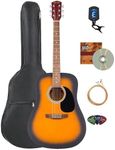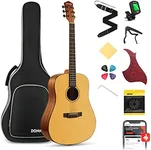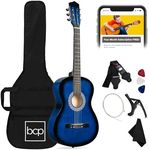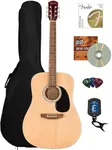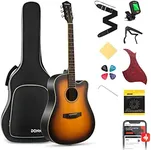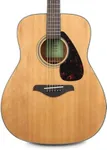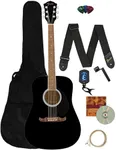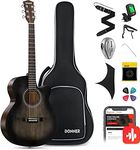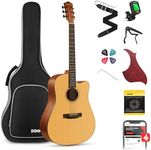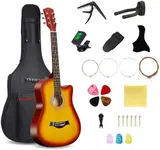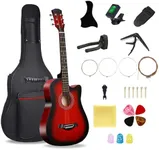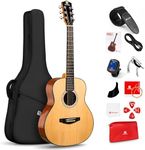Buying Guide for the Best Acoustic Guitars For Beginners
Choosing the right acoustic guitar as a beginner can be an exciting yet overwhelming experience. The key is to find a guitar that feels comfortable, sounds good, and motivates you to play. Here are some important specifications to consider when selecting an acoustic guitar for beginners, along with explanations to help you understand their significance and how to choose the best fit for your needs.Body ShapeThe body shape of an acoustic guitar affects both its sound and comfort. Common shapes include dreadnought, concert, and parlor. Dreadnought guitars are larger and produce a louder, bass-heavy sound, making them great for strumming and playing with others. Concert and parlor guitars are smaller, offering a more balanced tone and easier handling, which can be ideal for fingerpicking and smaller players. Beginners should consider their body size and playing style when choosing a body shape.
TonewoodTonewood refers to the type of wood used to construct the guitar, which influences its sound. Common tonewoods include spruce, mahogany, and cedar. Spruce is light and strong, providing a bright and clear tone, making it a popular choice for beginners. Mahogany offers a warmer, more resonant sound, while cedar provides a softer, mellower tone. Beginners should choose a tonewood that matches their preferred sound and playing style.
Neck ProfileThe neck profile describes the shape and thickness of the guitar's neck, affecting playability and comfort. Common profiles include C-shaped, V-shaped, and U-shaped. C-shaped necks are rounded and generally more comfortable for beginners, while V-shaped necks have a more pronounced ridge, and U-shaped necks are thicker and more substantial. Beginners should try different neck profiles to find one that feels comfortable in their hand.
Scale LengthScale length is the distance between the guitar's nut and the bridge, affecting string tension and playability. Shorter scale lengths (around 24 inches) result in lower string tension, making the guitar easier to play, which can be beneficial for beginners. Longer scale lengths (around 25.5 inches) provide a brighter tone and more string tension. Beginners should consider their hand strength and comfort when choosing a scale length.
ActionAction refers to the height of the strings above the fretboard. Lower action makes the guitar easier to play, as less pressure is needed to press the strings down. Higher action can produce a clearer sound but may be harder for beginners to play. Beginners should look for a guitar with low to medium action to ensure a comfortable playing experience.
ElectronicsSome acoustic guitars come with built-in electronics, allowing them to be amplified. This can be useful for beginners who plan to perform or record. However, purely acoustic guitars without electronics are often simpler and more affordable. Beginners should consider whether they need the option to amplify their guitar when deciding on electronics.
Brand ReputationThe reputation of the guitar brand can be an indicator of quality and reliability. Established brands often have a history of producing well-made instruments and offer good customer support. Beginners should research and consider reputable brands to ensure they are getting a reliable guitar that will last.
